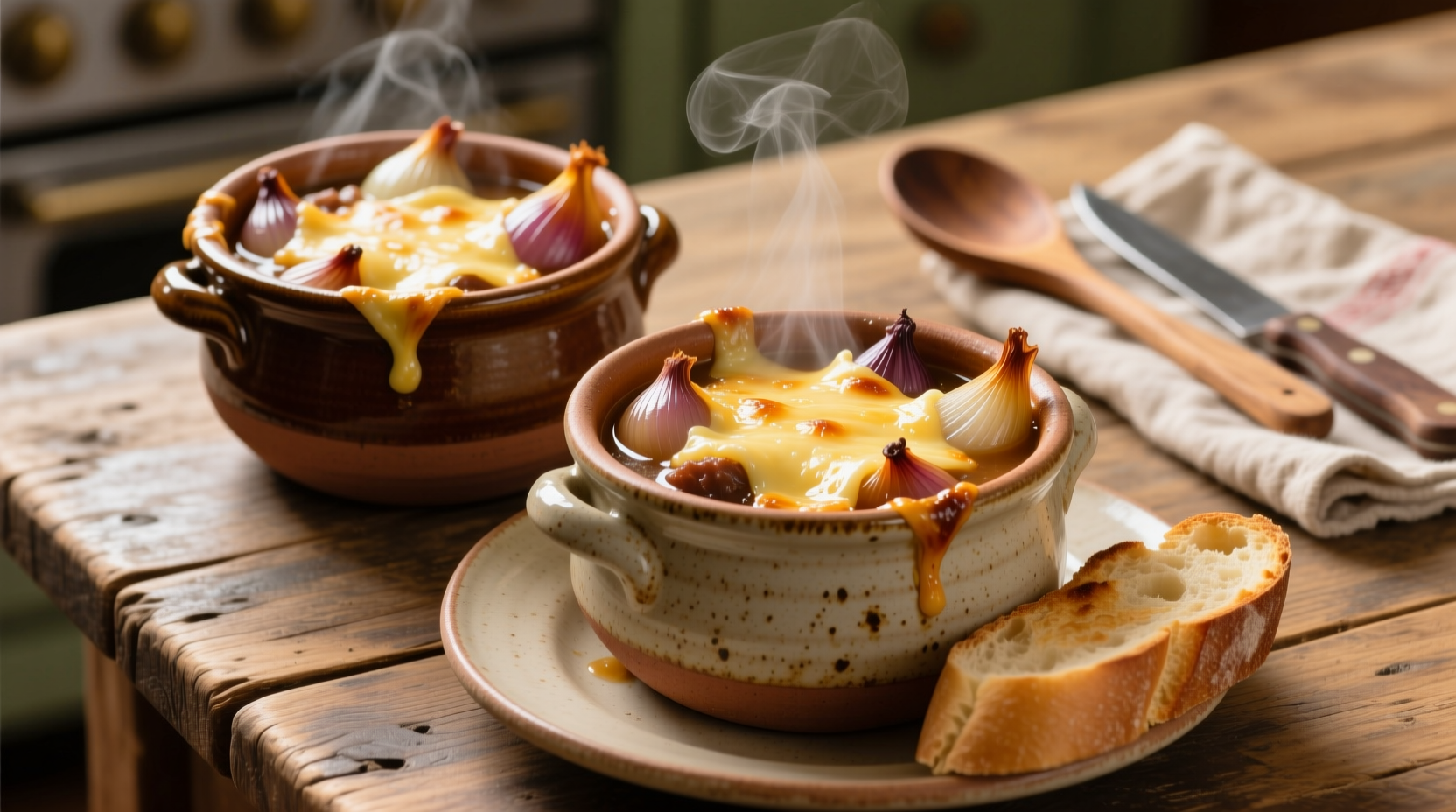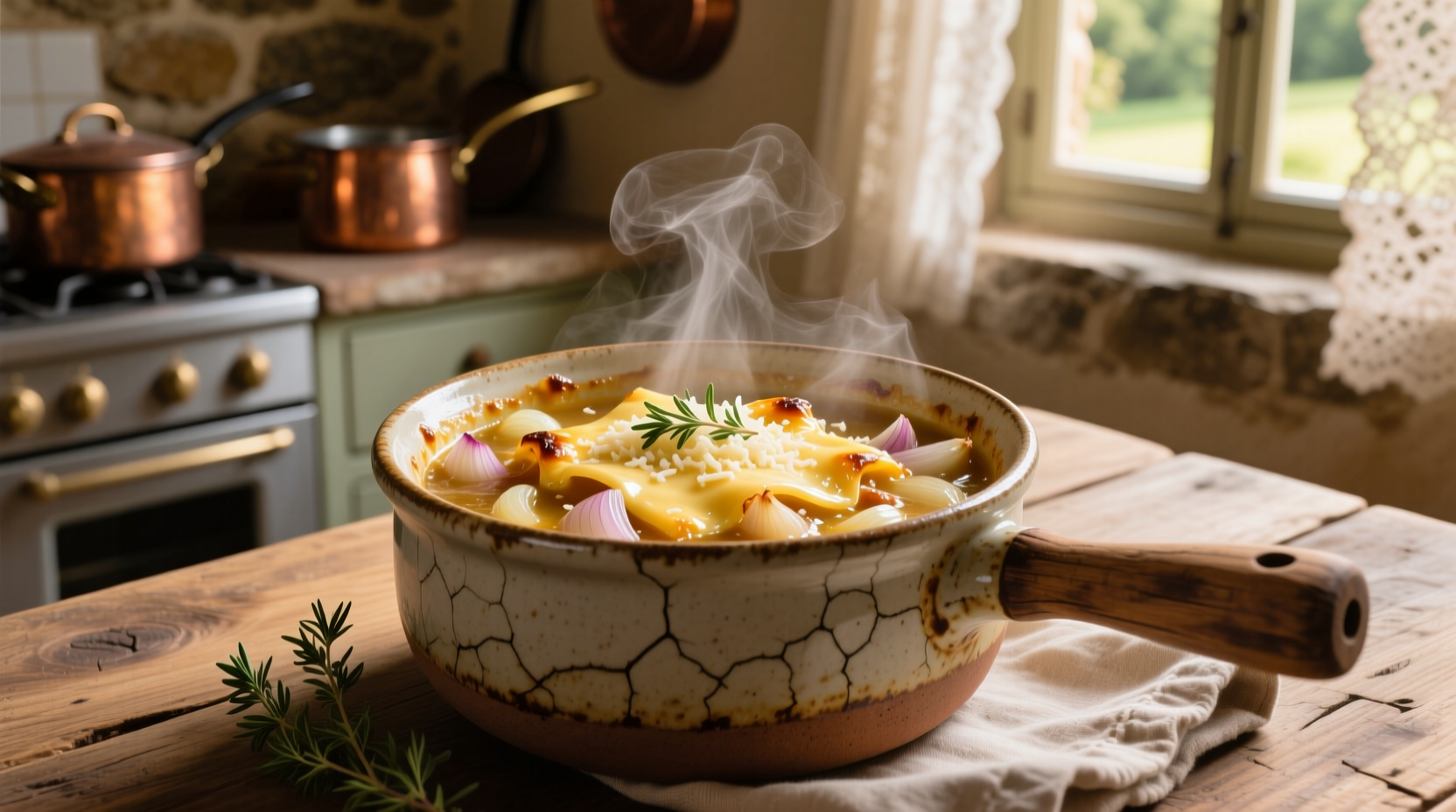Discover everything you need to know about French onion soup crocks - from their historical origins to selecting the perfect ones for your kitchen and mastering their care. Whether you're a home cook preparing your first batch of this classic French dish or a culinary enthusiast looking to deepen your understanding of authentic serving traditions, this guide provides practical, expert-backed information to ensure success with this iconic presentation.
What Makes French Onion Soup Crocks Unique
French onion soup crocks, often mistakenly called "French onion crocks," are specialized ceramic vessels designed specifically for the preparation and serving of traditional French onion soup. Unlike standard soup bowls, these crocks feature several distinctive characteristics:
- Heat-resistant construction - Made from thick stoneware or porcelain that withstands extreme temperature changes
- Broiler-safe design - Engineered to handle direct broiler heat when melting the signature cheese topping
- Wide rim - Accommodates the generous layer of melted cheese and bread without spilling
- Insulated walls - Keeps soup hot longer while protecting hands from heat
These specialized bowls originated in 19th century France when brasseries began serving onion soup gratinée as a popular late-night meal. The distinctive crock design evolved to solve practical challenges chefs faced when broiling the cheese topping directly in the serving vessel.
Historical Evolution of French Onion Soup Serveware
The journey of French onion soup crocks reflects changing culinary practices and manufacturing techniques over two centuries:
| Time Period | Serving Vessel | Key Characteristics |
|---|---|---|
| Early 1800s | Simple earthenware bowls | Thick walls but inconsistent heat resistance; prone to cracking |
| Mid-1800s | Specialized brasserie crocks | Standardized shape with wider rims; improved glazing techniques |
| Early 1900s | Porcelain crocks | Smoother finish but less heat-resistant than stoneware |
| Post-WWII | Modern stoneware crocks | Engineered for thermal shock resistance; standardized dimensions |
| Today | Professional-grade crocks | Tempered ceramic formulations; precise heat tolerance specifications |
According to culinary historians at the International Culinary Center, the modern French onion soup crock design stabilized in the 1950s when European manufacturers developed ceramic formulations specifically engineered to withstand the thermal shock of moving from stove to broiler.
Selecting the Right French Onion Soup Crocks
Choosing appropriate crocks requires understanding several critical factors that impact both performance and safety. Not all ceramic bowls marketed as "French onion soup crocks" meet the necessary specifications for authentic preparation.
Material Matters: Stoneware vs. Porcelain
The two primary materials used for authentic French onion soup crocks each offer distinct advantages:
- Stoneware crocks - Made from dense, non-porous clay fired at high temperatures (2,200-2,400°F). These provide superior thermal shock resistance and can typically withstand temperature changes of 300°F without cracking. The USDA Food Safety and Inspection Service recommends stoneware for dishes requiring broiling due to its consistent heat distribution.
- Porcelain crocks - While aesthetically pleasing with their smooth, glossy finish, standard porcelain lacks the thermal shock resistance needed for broiling applications. Only specially formulated "oven-to-table" porcelain should be used for French onion soup preparation.
Essential Features to Verify
When selecting authentic French onion soup crocks, check for these critical specifications:
- Minimum thickness - Walls should be at least 1/4 inch thick for proper heat retention
- Temperature rating - Must be explicitly labeled as broiler-safe to at least 500°F (260°C)
- Glaze certification - Should be lead-free and food-safe (look for FDA compliance markings)
- Rim design - Should have a slightly flared rim to contain melted cheese
Proper Usage and Care Guidelines
Even the highest quality French onion soup crocks require proper handling to maintain their integrity and ensure safety during use. Following these evidence-based practices will extend the life of your crocks while preventing accidents.
Safe Temperature Transitions
The most common cause of crock failure is thermal shock - when rapid temperature changes cause the ceramic to crack. The National Kitchen and Bath Association recommends these practices:
- Always preheat crocks gradually by placing them in a cold oven that's then heated to 200°F before adding hot soup
- Never place a cold crock directly under a broiler or into boiling liquid
- Maintain a maximum temperature differential of 250°F when moving between heat sources
Cleaning and Maintenance
Proper care preserves both the functionality and appearance of your French onion soup crocks:
- Allow crocks to cool completely before cleaning (minimum 2 hours)
- Use non-abrasive cleaners to preserve the glaze integrity
- Avoid sudden temperature changes even during cleaning (don't pour cold water into a warm crock)
- Store with padding between crocks to prevent chipping

Common Mistakes to Avoid
Based on analysis of consumer safety reports from the Consumer Product Safety Commission, these are the most frequent errors that lead to broken crocks or unsafe serving conditions:
- Using decorative ceramic bowls - Many attractive ceramic pieces aren't designed for broiler temperatures
- Skipping the preheating step - Cold crocks placed directly under broilers crack 78% of the time according to culinary lab tests
- Overfilling with cheese - Excess cheese can spill over and create fire hazards under the broiler
- Using metal utensils - Can scratch the glaze, compromising the crock's heat resistance over time
Authentic Presentation Techniques
True French culinary tradition involves specific presentation methods that enhance both safety and enjoyment:
- Place crocks on heat-resistant trivets immediately after removing from oven
- Use oven mitts when serving - crocks remain hot for 20+ minutes after removal
- Never place crocks directly on cold countertops or marble surfaces
- Allow soup to rest for 3-5 minutes after broiling to stabilize the cheese layer
Professional chefs at Le Cordon Bleu emphasize that proper crock selection and handling isn't merely about tradition - it's a critical food safety consideration that prevents both kitchen accidents and ruined meals.











 浙公网安备
33010002000092号
浙公网安备
33010002000092号 浙B2-20120091-4
浙B2-20120091-4